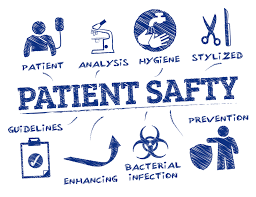
Ventilator Associated Pneumonia (VAPs) in children
Order Instructions:
Follow all the given guidelines. See the attached files.
SAMPLE ANSWER
Reflection #1: Ventilator Associated Pneumonia (VAPs) in children
VAPs are hospital acquired pneumonia that occurs in patients who have undergone mechanical ventilation for more than 48 hours; and previously had no symptoms of respiratory infection before the treatment. VAP occurs when bacteria colonize the lower respiratory tract in patient undergoing mechanical ventilation treatment. Microorganisms can be introduced to the lower respiratory system through micro-aspiration of bacteria from upper respiratory system or gastrointestinal tract or via biofilm production from the endotracheal tube (ETT) The diagnosis for ventilator associated pneumonia in children (VAP) is challenge. VAP is ranked as high health risk for hospitalized children. It accounts for 18% to 26% of Hospital Acquired Infections (HAIs). Currently, pneumonia is ranked as the 6th leading cause of death in US (Swedick et al, 2012).
VAP prevalence rate ranges from 10 to 30% and mortality rate ranging from 33% to 50%. It is associated with lengthened hospital stays; increased health costs, high rates of multi-drug resistant infections and delayed recoveries. It is estimated that 300000 VAP incidences are reported every year; and costs health care over $12billion annually. VAP is also associated with prolonged hospital stays to up to 22 days, costing $40000 per patient. The hospitalization cost for pediatric VAP cases is $308534 as compared to $252652 for patients free VAP. Evidently, there needs an effective strategy to target control for VAP from vantage points including medical team training universal hygiene and establishing effective protocol for microbiological infection surveillance. Integration of VAP strategic preventive interventions into clinical practices has been ineffective. In fact; studies indicate that only 22.3% of nurses and care givers practice the published infection prevention recommendations. The implementation of VAP-prevention guideline from previous studies is inconclusive (Cooper &Haut, 2013).
References
Cooper, VB., &Haut, C. (2O13) Preventing ventilator associated pneumonia in children: An evidence based protocol. Critical Nurse Care 33; 3, 21-33. Retrieved on January 21st, 2015 from
Swedick, MB. Et al. (2012) Using evidence based practice to prevent ventilator associated pneumonia. Critical Nurse Care 32; 4, 41-54. Retrieved on January 21st, 2015 from [http://eds.b.ebscohost.com/ehost/pdfviewer/pdfviewer?sid=4e4b66cd-23f9-45e8-a2f5-1006c82cf90b%40sessionmgr115&vid=0&hid=108]
Reflection #2: Ventilator Associated Pneumonia (VAPs) in children – PICO (T)
Research question: Which is the most effective preventive strategy to reduce the VAP prevalence in intubated children: VAP bundle or standard oral hygiene?
- Endotracheal tube insertion criteria and duration, high level of microscopic aspiration, Biofilms from colonization
- VAP is associated with microbial infection consistent with presence of endotracheal tube and mechanical ventilation for more than 48 hrs. In children, it is often associated with oral and mechanical hygiene because there is association between oropharynx microbials and VAPs incidences.
- Maintenance of good oral hygiene such as tooth brushing and use of oral antiseptic reagents such as chlorhexidine, airways clearance and use of bedside protocols preventive strategies
- The incidence of VAPs in children could be effectively reduced in children through implementing VAPs prevention guidelines and use of ventilator care bundles
- Treatment is matched to the causative agent for 7 to 14days
The article on “proposed pediatric specific bundle offers new strategies for preventing ventilator associated pneumonia in children” by Viejo C. evaluates the evidence for mechanical hygiene and ventilator care bundles in prevention of VAP incidences in children. The paper acknowledges the limited research in VAP prevalence and prevention strategies in children. Further, the article recommends the integration of VAP strategic preventive interventions into clinical practices to effectively reduce VAP incidences in children. In fact; studies indicate that only few of nurses and care givers practice the published infection prevention recommendations. The implementation of VAP-prevention guideline will facilitate effective reduction of VAP in children.
References
Viejo, A. (2013) ‘Pediatric specific bundle offer new strategies for preventing associated pneumonia in children.’ Retrieved on January 21st, 2015 from [http://www.prnewswire.com/news-releases/pediatric-specific-bundle-offers-new-strategies-for-preventing-ventilator-association
We can write this or a similar paper for you! Simply fill the order form!












